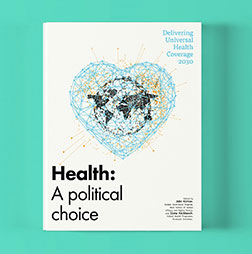Seizing the opportunities within the global trade crisis
When G7 leaders meet in Kananaskis, global trade disruptions will loom as prominently as the Rocky Mountains.
Trade policy uncertainty is at record highs. Real-time indicators point to falling demand and investment as anxious businesses and consumers sit on their hands.
The World Trade Organiztion issued our annual trade forecast in mid-April, days after the US announced far-reaching tariffs – then subsequently paused many of the higher duties. Our economists now project a 0.2% contraction in global merchandise trade volumes in 2025 – nearly three percentage points below the growth expected. The contraction could deepen to 1.5% if the paused US reciprocal tariffs are reinstated and trade tensions and further uncertainty escalate among other countries.
We have been urging WTO members to engage in dialogue with Washington and with each other to lower the temperature and minimise the economic damage. There have been welcome moves in this regard. Following high-level talks in Geneva in mid-May, the US and China lowered bilateral tariffs by 115 percentage points from prohibitive levels for 90 days. They also insisted they did not want to decouple their trading relationship. WTO economists estimate that should this truce hold, it could lift global goods trade by 0.3 percentage points from the April projection. The easing of certain US car tariffs could add a further 0.2 percentage points, cumulatively leading to 0.3% growth in global goods trade in 2025.
Nonetheless, risks remain on the downside. But while we should be concerned, this is a time for concerted action, not despair.
Policymakers looking to limit the damage to global trade and growth prospects have a strong foundation to build on. Roughly 74% of global goods trade continues to operate on most favoured nation tariff terms, and 87% of global goods trade takes place among the rest of the world outside the US. Governments, including the US, retain considerable agency to stabilise and strengthen world trade, and to manage the impacts of trade diversion.
Failing to do so would come at significant social and economic cost. Trade is a valuable driver of growth, poverty reduction and wider economic resilience. Open global trade helped economies rebound from the global financial crisis and the Covid-19 pandemic. Over the past few decades, trade has helped 1.5 billion people out of extreme poverty. Advanced economies have benefited, too, through increased purchasing power for households and businesses, stronger productivity growth, and access to global inputs and markets for their own exports. These are benefits we should strive to retain – not least because electorates will miss them if they disappear.
A focus on equitable trade
Not everyone has shared adequately in these gains. Many poor countries, particularly in Africa, remain on the margins of the multi-country supply chains that are a hallmark of modern globalisation. Even within rich countries, some people and places are left behind, fuelling today’s disenchantment and populism. That said, the focus on job dislocation linked to import competition and technological change often overshadows the reality that lost jobs are outnumbered by new ones linked to trade opportunities – jobs, however, often in the services sector, in different geographic locations and for different people.
Another justified criticism of the trading system pertains to overconcentration. The US makes a valid point about others’ overdependence on its market, or that the production of some key goods or supply chains is excessively concentrated in certain geographies and there is a need for deconcentration for national security or global resilience purposes.
The importance of re-globalisation
If one big takeaway from the Covid-19 pandemic was the vulnerability of supply chains and the importance of diversifying sources of supply, what we see today reminds us that we must also diversify sources of demand.
To make trade more equitable and more resilient, we need ‘re-globalisation’: deconcentrating production and demand by involving more countries and regions in international production networks. Cultivating new source locations is not enough – businesses also need to find new markets. Encouragingly, data suggest an increase in the number of source countries for different products. And South-South trade now accounts for around a quarter of world trade, up from less than a tenth in 1995. But we need to take this much further.
To do so, open trade anchored in international cooperation and rules remains vital. A silver lining of the current turmoil is the renewed recognition – among governments and businesses alike – of the value of the stable and predictable international market conditions we now take for granted.
But there is also a big warning sign that WTO members ignore at the peril of the organisation. The US is hardly alone in wanting to see changes to how the trading system functions. WTO members have long complained of different problems, from unfair trade practices and other level playing field concerns, to repairing the dispute settlement system, helping poor countries to grow by better integrating into world trade, and improving decision-making processes so that the WTO agenda can keep moving forward. One clear need is for more dynamism within the WTO: from more negotiating instruments to re-vitalised rules and agreements. Our rules were never meant to be set in stone. Over the past 30 years the world has changed, and WTO rules must be reconsidered and changed as needed.
G7 leaders face a pivotal choice: continuing down the road of fragmentation in global trade, or repositioning and re-vitalising the WTO and the multilateral trading system. For the sake of future prosperity, fairness and resilience, I hope they will give their political backing to the latter – and instruct their trade ministers to deliver.












